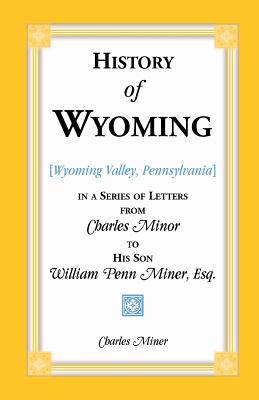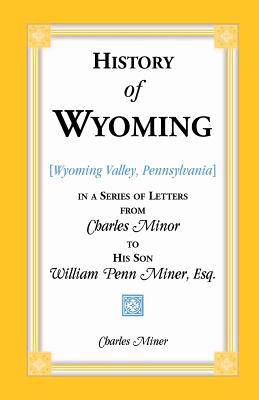
- Afhalen na 1 uur in een winkel met voorraad
- Gratis thuislevering in België vanaf € 30
- Ruim aanbod met 7 miljoen producten
- Afhalen na 1 uur in een winkel met voorraad
- Gratis thuislevering in België vanaf € 30
- Ruim aanbod met 7 miljoen producten
Zoeken
History of Wyoming (Valley, Pennsylvania) in a Series of Letters from Charles Minor to His Son William Penn Miner, Esq.
Charles Miner
Paperback | Engels
€ 41,95
+ 83 punten
Omschrijving
The author chose to let the history of Wyoming Valley unfold through a series of letters to his son "because, besides being indebted to him for aid and many valuable suggestions, it must be obvious that a variety of minute details necessary to be preserved to present a perfect picture of life, manners and events, among a plain people, in a new and rude settlement, requires an easier style and freer scope of pencil, than might be deemed fitting to the grave Delineator of the fate of Nations, or to the Historian who records the revolutions, the rise and the fall of Empires." A chapter containing a brief description of Wyoming precedes the letters. The letters discuss native inhabitants, the Six Nations, Mohawks, Massawamees, Moravians, efforts to Christianize Wyoming Indians, controversy between Pennsylvania and Connecticut, the Susquehanna Company's purchase, the First Pennymite War, Capt. Nathan Ogden, first settlers, women in Wyoming, Westmoreland, the Revolutionary War, Wyoming companies, civil affairs, proceedings of the Pennsylvania Assembly, legal matters, Wilkesbarre, Wallenpaupack, and much, much more. In addition to the letters, this volume includes an interesting paper, "An Indian Tradition, Concerning the Origin of the Five Nations;" extracts of letters, articles and other documents; and numerous lists of names. A wealth of appendices and a full-name index complete this work.
Specificaties
Betrokkenen
- Auteur(s):
- Uitgeverij:
Inhoud
- Aantal bladzijden:
- 634
- Taal:
- Engels
Eigenschappen
- Productcode (EAN):
- 9781556134555
- Verschijningsdatum:
- 1/09/2013
- Uitvoering:
- Paperback
- Formaat:
- Trade paperback (VS)
- Afmetingen:
- 140 mm x 216 mm
- Gewicht:
- 721 g

Alleen bij Standaard Boekhandel
+ 83 punten op je klantenkaart van Standaard Boekhandel
Beoordelingen
We publiceren alleen reviews die voldoen aan de voorwaarden voor reviews. Bekijk onze voorwaarden voor reviews.











